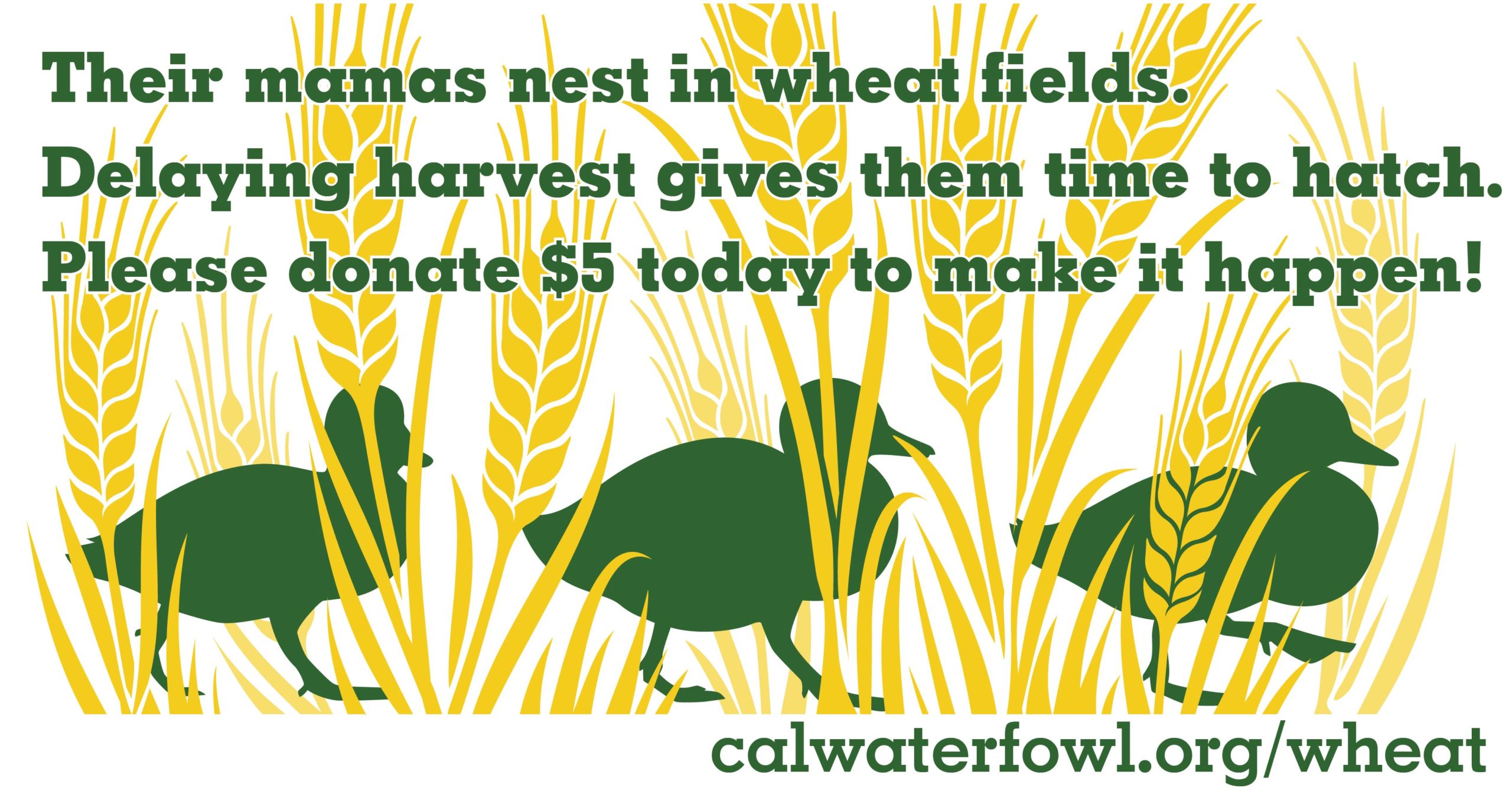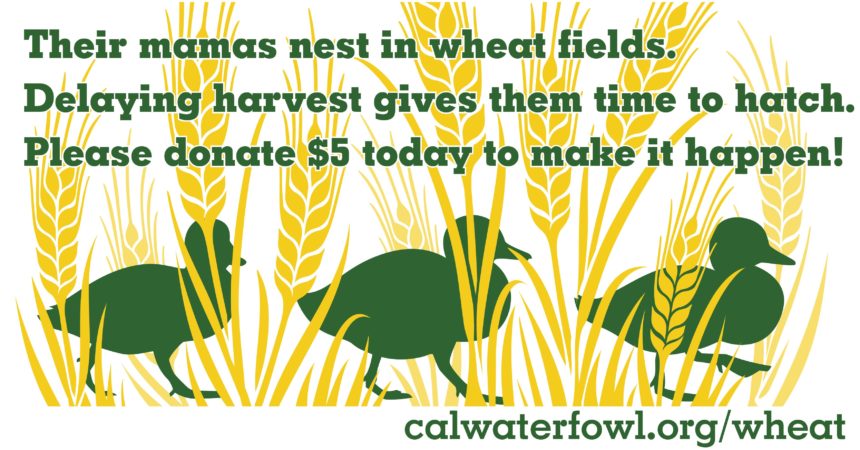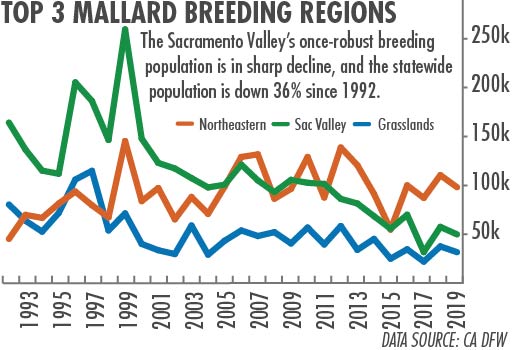
Mar 10, 2020
New program enlists wildlife-friendly farmers to save mallard ducklings

California Waterfowl will provide incentives to select farmers this year to delay harvesting wheat and triticale to give wild duck nests in their fields time to hatch.
In California, we know our vast rice fields serve as “surrogate wetlands” for waterfowl and other wildlife. But our fields of winter wheat and triticale can play an equally important role as “surrogate uplands” where mallards and other ground-nesting birds can build nests safely hidden from predators in the dense growth. There’s only one hitch.
Depending on the year, harvest begins anywhere between late May and early June, often before the majority of ducklings can hatch and get out of the field. This results in complete loss of the nest, and often the hen, if she doesn’t flush away from the harvester in time.
California Waterfowl operates an Egg Salvage Program in cooperation with farmers to rescue nests prior to harvest or field work in agricultural fields. Nests are located and delivered to a licensed hatchery where eggs are incubated, and ducklings reared for five weeks with minimal human interaction before being released into the wild.
But the very best thing is for ducklings to be reared by their mothers, so this year we are introducing our Delayed Wheat Harvest Incentive Program, which will provide incentives to farmers of $30 to $40 per acre to delay wheat and/or triticale harvest until July 1-15. The incentives offset costs associated with delaying harvest.
Farmers have been some of the best allies waterfowl have in this state, and we’re excited to create an opportunity for farmers to help boost our local mallard population.
Why ducks love wheat
Wheat is incredibly attractive to nesting ducks. Winter wheat fields are seeded in the fall and grow throughout the winter. By nesting season, a lush, dense stand of winter wheat near a planted rice field looks like a great nesting location with brood-rearing habitat just a waddle away. Several studies have found ducks may favor winter wheat over natural uplands when they’re available, and winter wheat in rice country can produce far higher mallard nest densities and nest survival than anything in the Prairie Pothole Region.
 Unfortunately, wheat acreage has been declining along with its poor market price, and the Sacramento Valley’s once robust mallard population is declining with it. We may not be able to stop the market forces that are reducing wheat acreage, but we can work to make the Valley’s remaining wheat as productive as possible for waterfowl.
Unfortunately, wheat acreage has been declining along with its poor market price, and the Sacramento Valley’s once robust mallard population is declining with it. We may not be able to stop the market forces that are reducing wheat acreage, but we can work to make the Valley’s remaining wheat as productive as possible for waterfowl.
Want to help?
We currently have a matching grant from a generous donor, Ned Spieker, so every donation we receive in support of this program will be matched up to $20,000. You can donate safely and securely online.
Want to participate?
We are accepting applications through 4 p.m. March 25, 2020, from farmers in Butte, Colusa, Sacramento, Sutter, and Yolo counties who have planted winter wheat or triticale in close proximity to a summer water source, such as planted rice, managed wetlands, creeks or irrigation canals.
More information
For more information, contact Waterfowl Programs Supervisor Caroline Brady at 916-275-1018 or cbrady@calwaterfowl.org.


